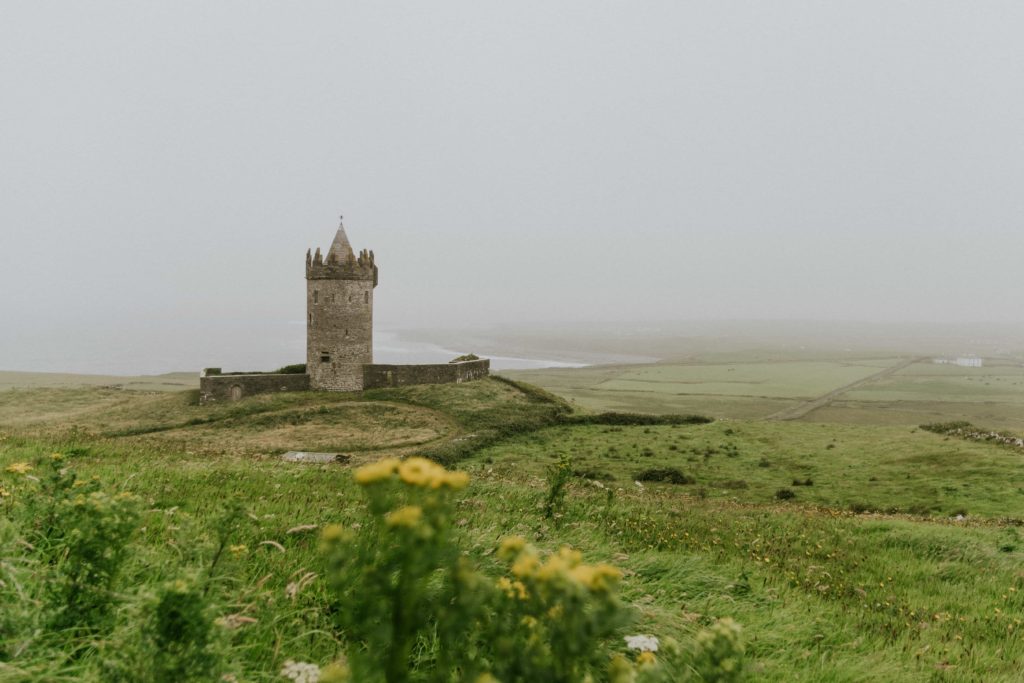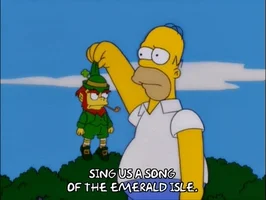
From Shamrocks to Leprechauns: St. Patrick’s Day Traditions Explained
What’s the Origin and Meaning Behind St. Patrick’s Day Traditions?
St. Patrick’s Day: A day of eating corned beef and cabbage, drinking Guinness, and Irish dancing. Everyone dresses in green or wears a shirt that says “Kiss Me, I’m Irish!” This fun holiday has been around for centuries. But you may be wondering, how did St. Patrick’s Day traditions start?
In this article, we’ll go over everything you need to know about St. Patrick’s Day, including:
- St. Patrick’s Day origins
- Who is Saint Patrick
- Irish vs US St. Patrick’s Day celebration
- Common St. Patrick’s Day symbols and sayings
Let’s get into it!
St. Patrick’s Day Origins
St. Patrick’s Day is a celebration that observes the death of Saint Patrick on March 17. St. Patrick is largely recognized as the patron saint of Ireland. There are many myths and legends about Patrick, including his having banished all snakes from the island country.
However, who is Patrick and how did he become the patron saint of Ireland?
Who is Saint Patrick?
Born in Britain in 368, Patrick was a missionary and bishop who is credited with bringing Christianity to Ireland, which was a mostly pagan country at the time. But how did his ministry come about?
When he was 16 years old, Patrick was kidnapped and sold into slavery in Ireland. During his six years of slavery, Partick turned to God and his faith in Christ to help him get through this rough time. Eventually, he escaped and returned home to Britain.
St. Patrick’s Ministry in Ireland
Once he returned home, Patrick began to study the Christian faith and became a priest. Even though Ireland is where he suffered as a slave, he decided to return to convert the Irish to Christianity. He ministered to the Christians already in Ireland, baptized people into the faith, and set up monasteries.
After his death on March 17, 461, Patrick became recognized as a saint by Irish Christians. Interestingly, though, he has never been formally canonized as a saint in the Roman Catholic Church.
Centuries later, St. Patrick’s day became a national holiday in Ireland.
Did you know? St. Patrick even incorporated traditional Irish culture when converting people to Christianity. For example, the Irish would honor their gods with fire, so Patrick incorporated bonfires into Easter celebrations.
History of St. Patrick’s Day Celebrations
St. Patrick’s Day celebrations started in the 17th century in Ireland and spread all over the world, especially in the U.S.
St. Patrick’s Day Origin in Ireland
In Ireland, St. Patrick’s Day or St. Paddy’s Day became a religious feast day. Traditionally, families would go to Mass and later watch a parade honoring the life of St. Patrick.
St. Patrick’s Day Spreads to the U.S.
While there were a few St. Patrick’s Day celebrations in America before the 1800s, the holiday didn’t become prevalent in American culture until 1850. In fact, St. Patrick’s Day as we know it in the U.S. started with the massive wave of Irish immigrants leaving their country due to the potato famine.
When the crop failed from 1845-1849, over a million Irish immigrated to U.S. cities like New York City and Boston. With them, they brought their culture and traditions – including St. Patrick’s Day.
Who knew the humble potato would have such a large impact on the spread of St. Patrick’s Day!
How is St. Patrick’s Day Celebrated in America
In the decades after the famine, the Irish in America would have St. Patrick’s Day parades to celebrate their heritage. Despite the discrimination they faced in the U.S., they were proud to express their roots.
Luckily, the Irish experienced more acceptance after thousands of them served in the Civil War. As they assimilated into American culture, St. Patrick’s Day became a day of celebration for Irish and non-Irish alike.
In the U.S. today, St. Patricks Day is celebrated in cities all over the country, especially in New York City, Boston, and Chicago.
Speaking of St. Patrick’s Day traditions, have you ever wondered why we wear green to celebrate this holiday?
5 St. Patrick’s Day Symbols and Sayings and their Meanings
Some unique symbols and sayings are associated with St. Patrick’s Day, but do you know where they come from?

1. Why do We Wear Green on St Patrick’s Day?
Did you know that the color associated with St. Patrick was actually blue, not green? So why do we all show up wearing green on March 17?
Owing to its lush rolling green hills, Ireland is nicknamed, The Emerald Isle. This is one reason why green is associated with St. Patrick’s Day, making it more of a cultural statement than anything else. Another factor is the Irish flag, which has a green stripe that represents the country’s Catholic population
Nowadays, green is so much associated with St. Patrick’s Day that you risk the chance of being pinched by fellow revelers if you don’t wear at least one green article of clothing!
And what’s more, many places dye their rivers, fountains, and other bodies of water green. People will even drink green beer. Delicious!
2. History of the Shamrock

The shamrock, a three-leaf clover, is the quintessential symbol of St. Patrick’s Day, but do you know why that is? Legends say that St. Patrick used the three leaves on the shamrock to symbolize the Holy Trinity in Christianity: the Father, the Son, and the Holy Spirit.
If you happen to stumble across a shamrock with an extra leaf, or a four-leaf clover, consider yourself EXTRA lucky. These lucky charms are said to be incredibly difficult to find.
3. Leprechauns

Leprechauns are mischievous, little creatures found in Irish folklore. Traditionally, they were said to be shoemakers and actually wore red, not green.
In fact, some researchers believe the word “leprechaun” came from the Irish word ‘leath bhrogan,’ which means shoemaker. It is said that if a person could capture a leprechaun, the creature would grant them three wishes.
Time to go leprechaun hunting!
4. “Kiss me, I’m Irish”
One of the most used St. Patrick’s Day phrases is “Kiss me, I’m Irish!”
This famous phrase is a reference to the Blarney Stone, embedded in the parapet of the Blarney Castle in Cork, Ireland. According to legend, kissing the Blarney Stone will bring you good luck and bless you with the skill of smooth-talking flattery. If you can’t get to Ireland, however, the next best thing is to kiss an Irish person who has kissed the stone.
So pucker-up!
5. “Luck of the Irish”
Another well-known saying – “Luck of the Irish” – is thought to be a tribute, maintaining that the Irish people and Irish-named teams like the Boston Celtics and Notre Dame Fighting Irish have naturally good fortune. However, the history of the term is actually darker than that.
According to Edward T. O’Donnell, author of “1001 Things Everyone Should Know About Irish American History,” the term is not Irish in origin.
“During the gold and silver rush years in the second half of the 19th century, a number of the most famous and successful miners were of Irish and Irish American birth….Over time this association of the Irish with mining fortunes led to the expression ‘luck of the Irish.’ Of course, it carried with it a certain tone of derision, as if to say, only by sheer luck, as opposed to brains, could these fools succeed.”
Discover Irish Culture and More with Pimsleur
Love exploring new cultures? Check out fascinating articles about language and cultures around the world through the Pimsleur blog.
Want to connect with the Irish culture but don’t know the language? Try a FREE Irish language lesson, on us!
No Comments for "From Shamrocks to Leprechauns: St. Patrick’s Day Traditions Explained"